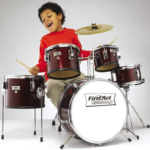Getting Ready for Guitar Lessons!
So, you’ve decided to pick up the guitar—congratulations! Whether you’ve always dreamed of playing your favorite songs, or you’re looking for a new hobby, learning to play the guitar is an exciting journey. The great thing about the guitar is that it’s an instrument you can have fun with from day one of guitar lessons. But before you can start strumming, you need to pick the right guitar and set yourself up for success. Here’s a guide to help you get started on your musical adventure.
1. Choosing the Right Guitar
Your first step is to find the guitar that suits your needs and preferences. Here are a few things to consider:
- Acoustic vs. Electric:
- Acoustic guitars are great for beginners because they’re straightforward—no need for an amp or extra equipment. They’re perfect if you enjoy folk, country, or singer-songwriter styles.
- Electric guitars are a bit more versatile, allowing you to explore various genres like rock, blues, and jazz. They require an amplifier, which adds to the cost and complexity, but the lighter strings can be easier on your fingers.
- Size and Comfort:
- Guitars come in different sizes. If you’re an adult with average-sized hands, a standard full-size guitar should work well. For younger players or those with smaller hands, a ¾ size or even a parlor guitar might be more comfortable.
- Try holding different guitars to see which feels the best in your hands and against your body. Comfort is key because you’ll be spending a lot of time with your instrument.
- Budget:
- It’s wise to start with a budget-friendly option, especially if you’re a beginner. There are plenty of quality guitars available that won’t break the bank. Aim to spend between $100 to $300 for a decent beginner guitar.
- If possible, avoid very cheap guitars, as they might have poor sound quality or be difficult to play, which could dampen your enthusiasm.
2. Essential Accessories
Once you’ve chosen your guitar, you’ll need a few accessories to enhance your learning experience:
- Tuner: Keeping your guitar in tune is crucial. A clip-on tuner is easy to use and helps you sound your best.
- Picks: These small pieces of plastic help you strum and pick the strings more easily. Experiment with different thicknesses to find what you like.
- Strap: A good guitar strap provides comfort, especially when playing while standing.
- Capo: A capo is a tool that clamps down on the guitar’s neck, allowing you to change the pitch of your strings easily. This is especially useful when playing along with songs in different keys.
3. Start Learning the Basics
Now that you’ve got your guitar and accessories, it’s time to dive into learning:
- Learn Basic Chords: Start with simple chords like G, C, D, and E minor. These are the building blocks of many songs.
- Practice Strumming Patterns: Get comfortable with different strumming patterns. It’s a fun way to explore rhythm and make your playing sound more dynamic.
- Use Online Resources or Lessons: There are countless free resources online, including YouTube tutorials and apps. Alternatively, consider taking lessons from a local teacher or through online platforms like Fender Play or Justin Guitar.
4. Have Fun with It!
The most important part of learning guitar is to have fun. Here’s how to keep the joy in your practice:
- Play Songs You Love: Learning songs you enjoy will keep you motivated. Don’t worry if they seem challenging at first—break them down into manageable sections and practice regularly.
- Jam with Friends: If you have friends who play instruments, try jamming together. It’s a great way to improve your skills and enjoy the social aspect of music.
- Experiment with Sounds: Don’t be afraid to experiment. Try different genres, play around with effects if you have an electric guitar, or even start writing your own songs.
5. Stay Consistent and Patient
Progress might seem slow at times, but consistency is key. Set aside time each day or week to practice, even if it’s just for 15 minutes. Celebrate small victories—whether it’s mastering a chord, playing a full song, or simply improving your strumming technique.
Conclusion
Starting guitar lessons is a rewarding experience that opens up a world of music and creativity. By choosing the right guitar, gathering essential accessories, and focusing on the basics, you’re well on your way to making music and having fun. Remember, the joy is in the journey, so enjoy every note you play!
Learn more about Music Classes here!
Signing up for lessons is easy!
- Send us more information about your goals
- Register with us now!
- Give us a call at (402) 576-5792



